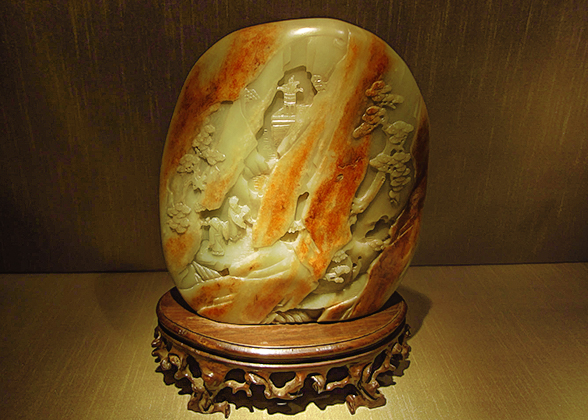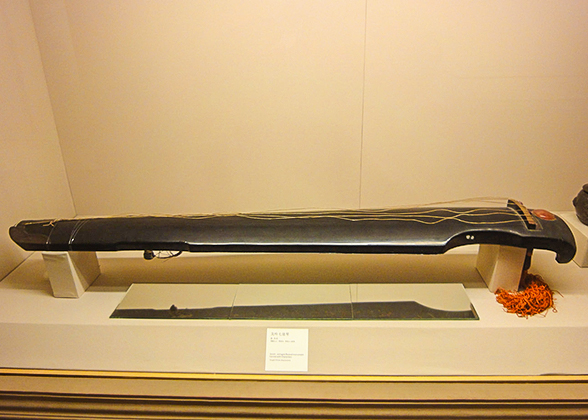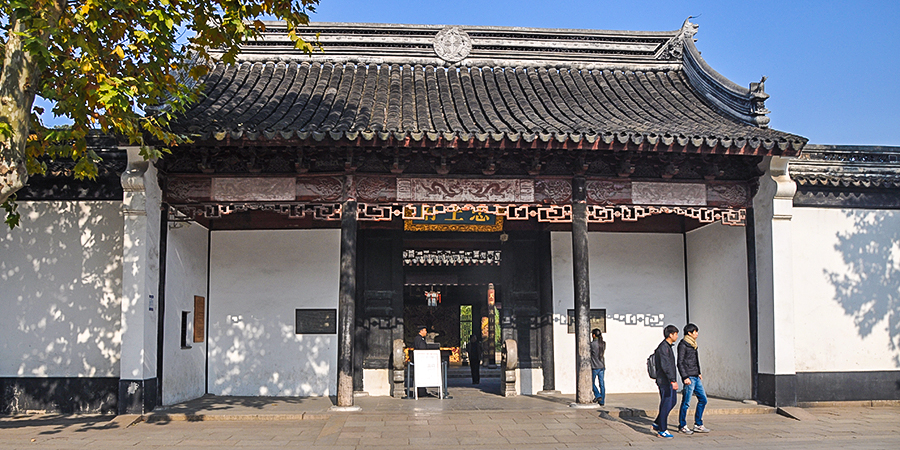Suzhou Museum is located at No. 204 Dongbei Street in Gusu District, ancient city of Suzhou, Jiangsu Province. It is adjacent to the Humble Administrator’s Garden. The museum was first founded in 1960 on the site of Prince Zhong’s Mansion. The new exhibition building was designed by the world-famous Chinese-American architect named I. M. Pei and opened to visitors in October 2006. This museum has abundant porcelains, relics of the revolution, most notably celadon, handicraft works, calligraphies and paintings of Ming and Qing Dynasties (1368-1911) which fully embody the history, art, and culture of Suzhou and Yangtze River Delta.
Suzhou Museum obeys the theme of “Design for China”. It combines modern exhibition halls and classical gardens’ architecture together. The whole structure contains three floors, which include an underground floor. The central and western parts of the museum have a second floor. The main buildings are less than 20 feet (6 meters) in height, and are surrounded by beautiful courtyards. Visitors will feel that the museum itself is like an exquisite work of art while appreciating the treasures and exhibits within.
Layout
With a total area of 22,723 square yards (19,000 square meters), the overall layout indicates that buildings are symmetrical on the axis. This museum contains three main areas: the central area, the western area and the eastern area. The central area includes: entrance, Great Hall and Museum Garden. The western area contains the main exhibition areas, which include four basic exhibition halls. The eastern part reveals secondary exhibition areas which include a modern art gallery, the Wisteria Court and administrative areas. This area also connects with Prince Zhong’s Mansion (the exit of the museum). The exhibition area of eastern and western areas adds up to 4,305 square yards (3,600 square meters). More than 15,000 exhibits are distributed within the 32 exhibition halls.
Basic Exhibitions
The permanent four exhibition halls with local characteristics contain cultural relics of the
Kingdom of Wu (222-280, whose original capital was Suzhou. The halls are respectively themed on the Treasures, Pagoda Relics, Elegant Life Style, and Paintings and Calligraphies of Wu Kingdom. The Wu Treasures Hall is located on the underground floor. This exhibition hall includes prehistoric pottery, jade and bronze vessels. The Wu Pagoda Relics Hall is on the ground floor. Two Buddhist-themed exhibition halls with abundant Buddhist relics were excavated from Huqiu Tower of
Tiger Hill and Ruiguang Pagoda in
Panmen Scenic Area. The Wu Elegant Life Style Hall mainly contains porcelain, embroidered clothes and four treasures of Chinese study, namely, writing brush, ink, paper and inkstone. The Wu Paintings and Calligraphies Hall displays rare paintings from Suzhou and Yangzhou areas during Ming and Qing Dynasties.
 | | The Jade Carving | |  | | The Bronze Ware | |
National Treasures
Celadon lotus-shaped bowl, a standard porcelain of
Five Dynasties (907-960) and
Northern Song Dynasty (960-1127), is the most precious treasure of Suzhou Museum. It was discovered on Huqiu Tower Relics in 1956. This porcelain consists of a bowl and a saucer. Patterns of seven different kinds of lotus are engraved on the bowl. The saucer is decorated with multi-petaled lotus in order to make the shape looks more lifelike. The plain and smooth glaze is just like a jade. The smooth lines of the vessel shape give expression to incomparable elegance. Viewed as a whole, the celadon lotus-shaped bowl is just like a blooming lotus. The beauty of this ingenious and fantastic exhibit attracts most visitors.
 | | Celadon Lotus-Shaped Bowl | |  | | A Porcelain Plate | |
Pearl Pillar of the Buddhist Shrine, created in Northern Song Dynasty (960-1127), embodies abundant Chinese traditional craftwork skills such as carving with gold and silver lines. With a height of 4 feet (122 centimeters), it consists of three sections from the bottom to the top: a sumeru base, dhvaja, and a top. The sumeru base is an octagon-shaped foundation that represents the eight custodians of Buddhism. It contains three layers; eight sides of each layer are covered with vivid patterns and surrounded with eight little exquisite silver lions.
"Seven Pieces of Painting” is also a treasure. With a length of 32 feet (10 meters) and a width of 1.2 feet (36.5 centimeters), this painting includes seven ink paintings of bamboo, which were painted by seven famous painters in
Yuan Dynasty (1271-1368). In 2006, the descendants of these painters donated this painting to Suzhou Museum. It is estimated that the value of this painting is around one hundred million yuan.
 |
| Exquisite Carvings |
Other Exhibitions
Besides the four basic exhibitions, there are three halls featuring exhibits introducing different traditional local customs - festivals and folk activities, auspicious gods and beliefs, breeding and education customs.
The museum also holds some temporary exhibitions themed on the paintings of Ming and Qing Dynasties, silk embroidery of Qing Dynasty, porcelain, and
Kunqu Opera – one of the original forms of Chinese opera, and over 600 years old.
 | | Silk Dragon Robe | |  | | Seven-String Guqin | |
Prince Zhong’s Mansion
After appreciating many rare exhibits, visitors can tour Prince Zhong’s Mansion. Throughout
Chinese history, Prince Zhong’s Mansion remains the most complete and best–preserved site of the peasant revolution in China. Compared with historical values, visitors can also admire its exquisite decorations. The ancient buildings of Prince Zhong’s Mansion are decorated with colorful carvings and paintings. The images of carvings are mainly dragons and phoenixes. There are nine complete murals drawn on wooden boards. These delicate murals mainly describe the scenery of wild fields. Moreover, it preserves more than 300 colored paintings with landscapes that are preserved completely and carefully. This unique artistic style is in complete accord with the exquisite Suzhou-style colored drawing. In addition, the symmetrical layout of Prince Zhong’s Mansion embodies the features of palace architecture during the period of the Taiping Heavenly Kingdom (1851-1864).
 |
| Prince Zhong’s Mansion |
Transportation
Take tourist bus no. 5, Gusu Tourist Line 4 or 5, 9009, 9016, 9025, 9029, and get off at Suzhou Museum Station.
Suzhou Bus Search Admission Fee & Opening Hours
| Admission Fee | The museum and Prince Zhong’s Mansion are all free. |
| Opening Time | 9:00-17:00 from Tuesday to Sunday (Closed on Monday except public holidays)
(No admission after 16:00) |
Recommended Nearby Attractions
 Humble Administrator’s Garden
Humble Administrator’s Garden Lion Grove Garden
Lion Grove Garden Pingjiang Road
Pingjiang Road Top 10 Things to Do in Suzhou
Top 10 Things to Do in Suzhou  12 Best Places to Visit in Suzhou
12 Best Places to Visit in Suzhou
- Last updated on Aug. 14, 2024 by Gabby Li -








